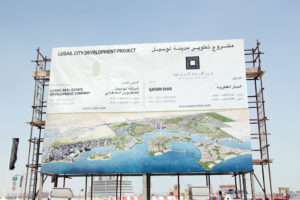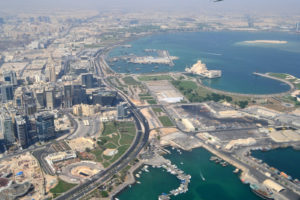 In 2010, the Fédération Internationale de Football Association, or FIFA, announced that the 2022 FIFA World Cup would be held in Qatar. Held every four years, the FIFA World Cup is the world’s largest single-sport competition. Qatar will be the first Middle Eastern country to host the event.
In 2010, the Fédération Internationale de Football Association, or FIFA, announced that the 2022 FIFA World Cup would be held in Qatar. Held every four years, the FIFA World Cup is the world’s largest single-sport competition. Qatar will be the first Middle Eastern country to host the event.
The opportunity to host the FIFA World Cup is a coveted one, not only because of the prestige associated with the multi-national event but also because of the influx of tourism that accompanies it. Host countries have the opportunity to share their culture with the world. The event also acts as a stimulant for infrastructure development throughout the host country.
Qatar beat out four other countries in the bidding war for the 2022 World Cup: South Korea, Japan, the US, and Australia. With just five years remaining to prepare for the event, the Qatar government is expected to invest around $200 billion in building new infrastructure—about 10% of the country’s national annual output. Here are some of the major infrastructure projects Qatar has planned for the tournament.
-
Lusail City

Image by Cassim Shepard | Flickr
Qatar plans not only to expand existing infrastructure and create new venues and stadiums, but also to build an entirely new city called Lusail. Expected to be completed in 2020, Lusail will be home to the Lusail Iconic Stadium, where the World Cup Final will be held. The stadium will have the capacity to accommodate 80,000 fans.
Plans for the city also include marinas, golf courses, a theme park, more than 20 hotels, and a lagoon. The city will encompass just under 40 square miles divided into 19 districts. Developers have designed the city to house as many as 450,000 residents. Lusail City’s development is expected to cost around $45 billion, a sum that will be provided by the Qatari government.
-
Qatar Rail Network
A major influx of people means an increased need for efficient transportation. To meet this need, Qatar has planned an enormous rail project featuring almost 200 miles of rail lines. The project will facilitate both passenger and freight lines, as well as new metro transportation systems for the cities of Lusail and Doha.
The Doha metro at the heart of the rail expansion will have as many as 100 stations, with some track above ground and some below. The Doha metro is expected to be complete in 2019, while the remainder of the Qatar rail expansion should be finished in 2026. The Qatari rail expansion is intended to be a part of a larger rail network connecting several countries in the Gulf region.
-
Hamad Port
The first phase of the new, $7.4 billion Hamad Port was completed in 2016. Traffic from the old Doha Port has been redirected to the new port, located near the town of Mesaieed. Before the construction of Hamad Port, large container ships had to stop in the UAE to offload their cargo onto smaller ships before entering Qatar. With the new port, Qatar can directly accept large container ships into the country.
The port will be fully operational in 2020, ahead of schedule. It will feature three terminals over eight square miles with the capacity to handle as many as 6 million containers every year.
-
Expressway Programme

Image by Marc Desbordes | Flickr
Qatar also has grand plans for a highway system to link the country’s major cities. Ten projects are currently under construction, with another 20 expected to be complete by 2017.
The project will bring almost 300 kilometers of two-way, four-lane highways to the Doha Expressway system. In addition, the Lusail Expressway will connect the unbuilt Lusail City to Doha, and another highway will connect Doha to the city of Dukhan. The complete project will add more than 900 km of new roads to Qatar, at a budget of over $8 billion.
-
Stadiums
Naturally, stadiums will be a major part of Qatar’s growing infrastructure. The country’s many stadium projects include both renovations and new constructions. Eight projects are currently in progress.
Khalifa International Stadium, which was built in 1976, will be undergoing an extensive renovation to modernize its look and increase its seating capacity. Lusail Stadium, where the World Cup Opening and Final will take place, will have an 80,000-seat capacity. It’s still in the design phase and the expected completion date is 2020. A new stadium called Ras Abu Aboud will be built on Doha’s eastern waterfront. This stadium could potentially become a mixed-use neighborhood community after the World Cup.
A collection of four football fields in southern Doha will also be converted into a stadium. Doha’s Education City will be home to the Qatar Foundation Stadium, scheduled to be completed in 2019. Other stadiums in the works include Al Wakrah, Al Bayt, and Al Rayyan.
In addition, Qatar has plans to build new roads, improve drainage and sewer systems, and even construct a theme park called Doha Festival City. It’s clear that the country does not take its 2022 World Cup responsibilities lightly; the time, money, and energy already invested into infrastructure demonstrates that.

